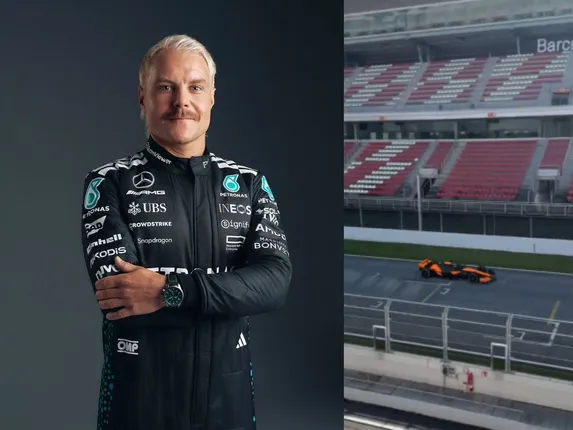
Valtteri Bottas is now the reserve driver for Mercedes, McLaren, and Williams. But how does that actually work in the modern F1 paddock?
In a unique twist of the F1 grid, Valtteri Bottas is currently listed as a reserve driver for not just one, but three different teams: Mercedes, McLaren, and Williams. It’s an unusual setup that raises plenty of questions—about contracts, confidentiality, and how F1 logistics actually function behind the scenes.
Why Bottas?
Despite stepping away from a full-time seat, Bottas remains a valuable asset. He’s got extensive experience with the Mercedes power unit, championship-contending pedigree, and years of data familiarity with all three teams—either directly or through shared technology.
Who Pays?
The short answer: Mercedes likely covers Bottas’ base salary, as he’s officially contracted as a reserve/ambassador for them. If McLaren or Williams need him to suit up for a race, they’d enter into a loan agreement with Mercedes for that race weekend, including potential appearance fees, travel expenses, and simulator time.
This setup saves money for McLaren and Williams, as they don’t need to maintain their own reserve drivers full-time—an especially efficient move under the cost cap.
What About the Cost Cap?
Driver salaries (including reserves) are excluded from the cost cap, as are the salaries of each team’s top three earners (think team principals, technical directors, or top aerodynamicists like Adrian Newey). So while Bottas’ reserve role helps smaller teams manage operational complexity, it doesn’t directly factor into cap compliance.
What About Team Secrets?
Here’s where it gets murky—but also overhyped. While McLaren, Williams, and Mercedes all run Mercedes power units, each team’s car is built around its own chassis, suspension setup, aero philosophy, and internal procedures. Drivers—especially those not embedded day-to-day—won’t have deep access to sensitive IP.
And while Bottas will surely give driver feedback, it’s unlikely he’ll be privy to the sort of technical details that could compromise competitiveness. Teams also rely on professional integrity—and the ever-looming possibility of FIA sanctions—to prevent any espionage-like behavior.
Can He Really Help Three Teams?
In theory, yes. In practice, Bottas’ role is likely more symbolic and emergency-focused. If a driver suddenly falls ill, he’s a well-prepared backup. He’s also a helpful presence in simulators, briefings, and media events. But he’s not bouncing between team debriefs or shadow-engineering their aero packages.
This multi-reserve setup is less about insider knowledge and more about ensuring there’s a proven driver available on call, with minimal disruption.
The Bigger Picture
This arrangement highlights a broader truth about modern F1: collaboration and convenience are more important than ever. With testing restrictions, tight budgets, and global travel, it makes sense to streamline reserve duties when a shared engine supplier (Mercedes) connects multiple teams.
And for Bottas? It keeps him relevant, sharp, and close to the action. Not bad for someone who once held off the entire field in Hungary for Lewis Hamilton’s title chase.
